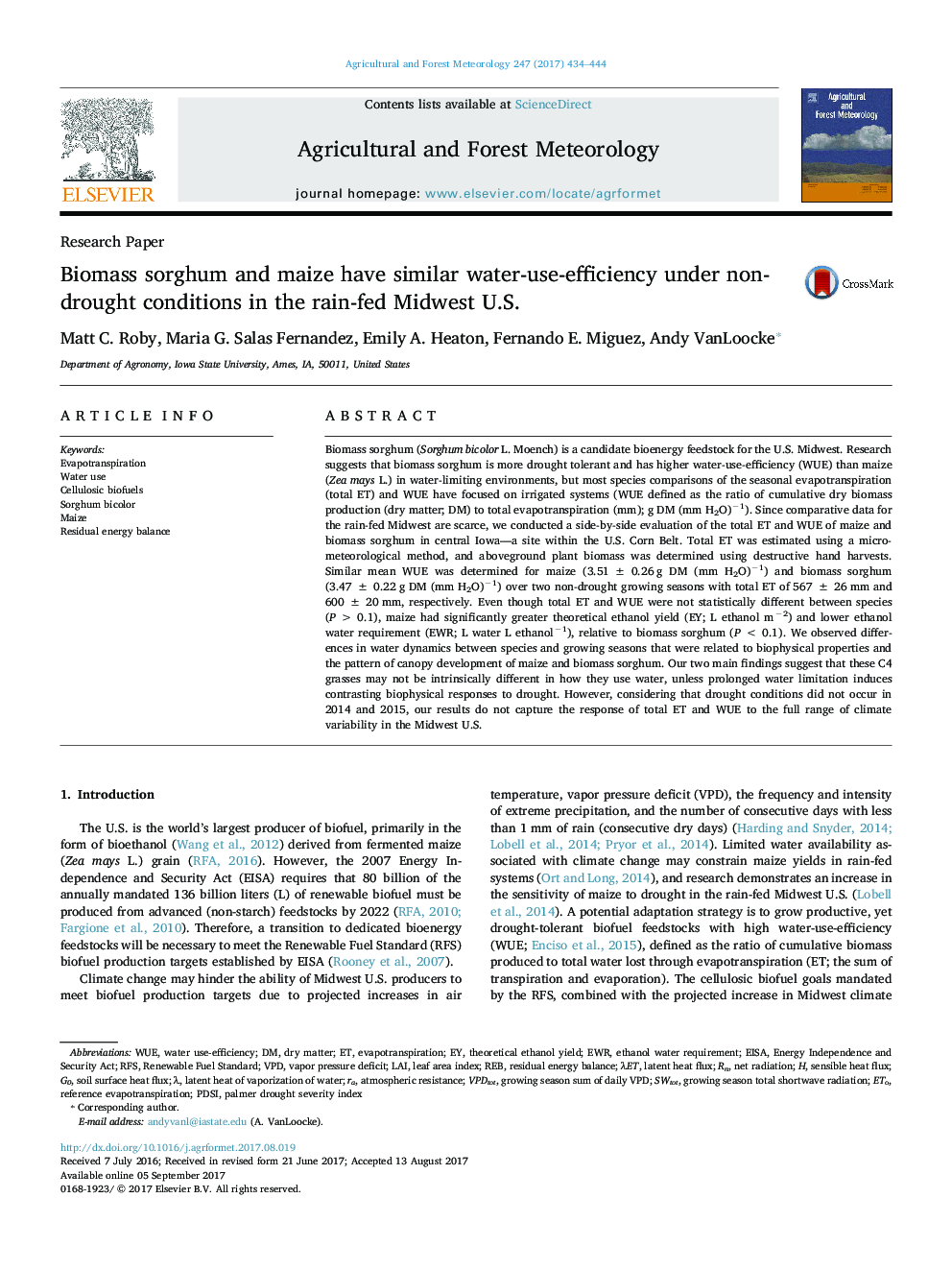| کد مقاله | کد نشریه | سال انتشار | مقاله انگلیسی | نسخه تمام متن |
|---|---|---|---|---|
| 6457821 | 1420854 | 2017 | 11 صفحه PDF | دانلود رایگان |

- First side-by-side comparison of rain-fed maize and biomass sorghum.
- We found similar mean water-use-efficiency for maize and biomass sorghum.
- Intraseasonal dynamics in total ET due to different rates of crop development.
- Theoretical ethanol yield was greater for maize than biomass sorghum.
- Biomass sorghum and maize had similar production under non-drought conditions.
Biomass sorghum (Sorghum bicolor L. Moench) is a candidate bioenergy feedstock for the U.S. Midwest. Research suggests that biomass sorghum is more drought tolerant and has higher water-use-efficiency (WUE) than maize (Zea mays L.) in water-limiting environments, but most species comparisons of the seasonal evapotranspiration (total ET) and WUE have focused on irrigated systems (WUE defined as the ratio of cumulative dry biomass production (dry matter; DM) to total evapotranspiration (mm); g DM (mm H2O)â1). Since comparative data for the rain-fed Midwest are scarce, we conducted a side-by-side evaluation of the total ET and WUE of maize and biomass sorghum in central Iowa-a site within the U.S. Corn Belt. Total ET was estimated using a micrometeorological method, and aboveground plant biomass was determined using destructive hand harvests. Similar mean WUE was determined for maize (3.51 ± 0.26 g DM (mm H2O)â1) and biomass sorghum (3.47 ± 0.22 g DM (mm H2O)â1) over two non-drought growing seasons with total ET of 567 ± 26 mm and 600 ± 20 mm, respectively. Even though total ET and WUE were not statistically different between species (P > 0.1), maize had significantly greater theoretical ethanol yield (EY; L ethanol mâ2) and lower ethanol water requirement (EWR; L water L ethanolâ1), relative to biomass sorghum (P < 0.1). We observed differences in water dynamics between species and growing seasons that were related to biophysical properties and the pattern of canopy development of maize and biomass sorghum. Our two main findings suggest that these C4 grasses may not be intrinsically different in how they use water, unless prolonged water limitation induces contrasting biophysical responses to drought. However, considering that drought conditions did not occur in 2014 and 2015, our results do not capture the response of total ET and WUE to the full range of climate variability in the Midwest U.S.
Journal: Agricultural and Forest Meteorology - Volume 247, 15 December 2017, Pages 434-444